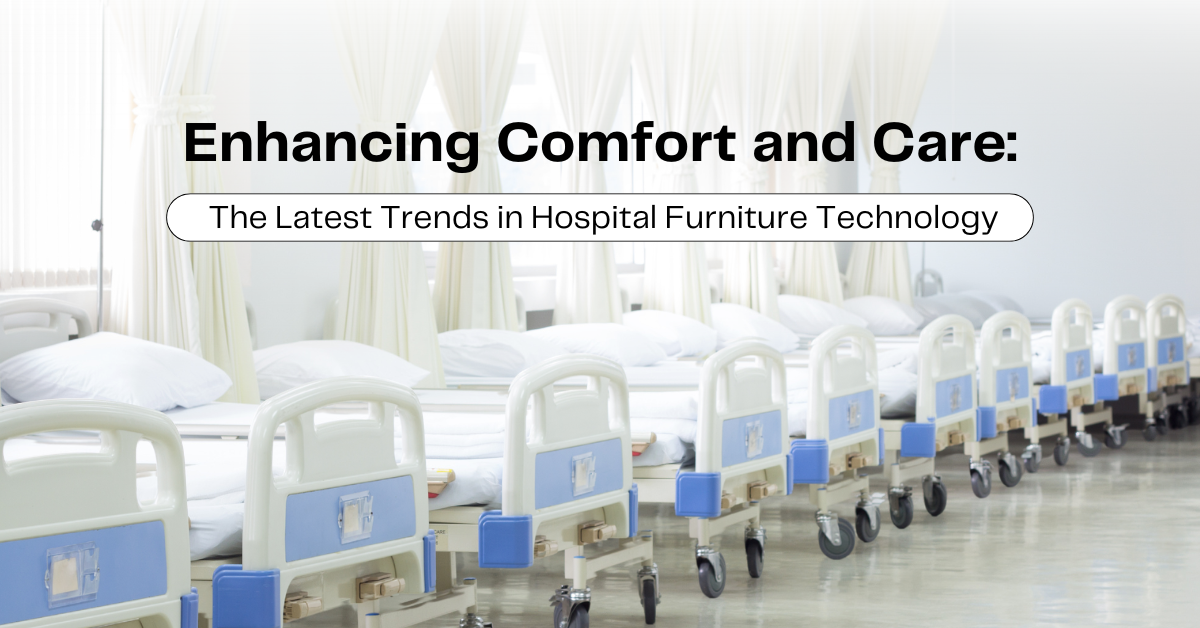Hospitals are always looking for methods to improve staff productivity and general well-being while also improving the patient experience in the ever-changing healthcare environment. Hospital furniture technology is one area that is frequently disregarded yet has a significant influence on both patients and carers. Our understanding of patient care and the hospital environment is changing as a result of creative designs and technological breakthroughs in this area. Come explore the newest developments in hospital furniture technologies that are transforming patient safety, comfort, and care delivery.
Multifunctional and Adaptable Designs
In order to accommodate the many demands of both patients and medical staff, modern hospital furniture embraces flexibility and adaptability. There is a growing trend of adjustable beds with integrated electronics, including built-in lighting controls, nurse call buttons, and entertainment systems. By making key functions easily accessible, these multipurpose designs not only improve patient comfort but also streamline the delivery of treatment. Furthermore, versatile configurations made possible by modular furniture solutions let healthcare institutions easily adjust to changing demands.
Infection Control and Antimicrobial Properties
Healthcare environments require a high standard of hygiene, and furniture makers are meeting this problem head-on with creative solutions. Hospital furniture designs are starting to use antimicrobial materials and coatings, which can help lower the incidence of healthcare-associated infections (HAIs). To make patient areas safer and more sanitary, technologies such as easy-to-clean materials, coatings based on silver, and surfaces impregnated with copper are just a few examples.
Ergonomic and User-Friendly Designs
Encouraging the health of medical staff is just as vital as providing for patients’ needs. Hospital furniture that is ergonomically designed and has features like smooth surfaces, adjustable heights, and user-friendly controls is becoming more and more common. In addition to lowering physical strain on employees, these user-friendly designs increase workflow efficiency, freeing up carers to concentrate on providing patients with the best care possible while lowering the risk of musculoskeletal problems.
Integration of Smart Technology
The way patients and medical staff interact with their environment is being revolutionised by the incorporation of smart technology into hospital furnishings. More and more furniture components, including beds and chairs, are coming with sensors, data collecting tools, and networking functions. This improves care coordination and patient outcomes by enabling real-time monitoring of patient vitals, automatic comfort changes, and smooth communication between patients and carers.
Sustainable and Environmentally Friendly Materials
The furniture business is adopting eco-friendly materials and production techniques as the healthcare sector places a greater emphasis on sustainability. Hospital furniture designs are beginning to include renewable and recycled materials, such bamboo, cork, and recycled plastics, to lessen their environmental effect while keeping the furniture practical and long-lasting. A circular economy strategy is also being promoted by certain manufacturers who are putting into practice cradle-to-cradle principles, which guarantee that furniture parts may be readily dismantled and recycled at the end of their useful lives.
Therapeutic Design Elements
Beyond functional considerations, hospital furniture is also incorporating therapeutic design elements to create a more calming and healing environment. Soothing color palettes, natural materials, and biophilic elements like wood grain patterns are being integrated into furniture designs to promote relaxation and reduce stress for both patients and visitors. These thoughtful touches contribute to a holistic approach to patient care, recognizing the importance of psychological and emotional well-being in the healing process.
Modern hospital furniture designs support worker health, infection prevention, and environmental sustainability in addition to improving patient comfort and care. The importance of creative furniture designs in fostering healing settings that prioritise patient-centered care, staff productivity, and overall healthcare excellence will only grow as healthcare facilities continue to change. Hospitals may improve patient outcomes and give everyone a really complete and helpful experience by adopting these state-of-the-art solutions.






